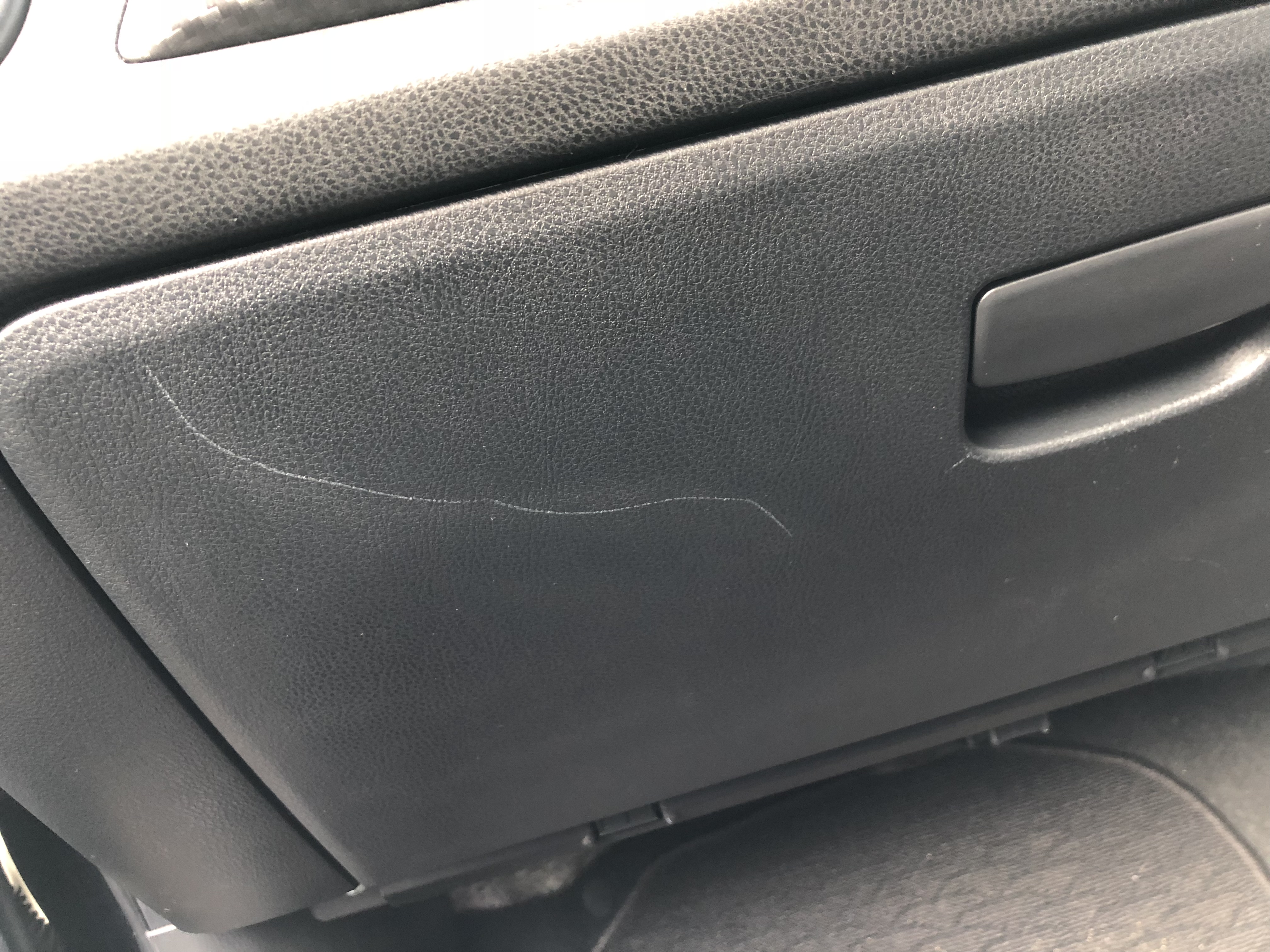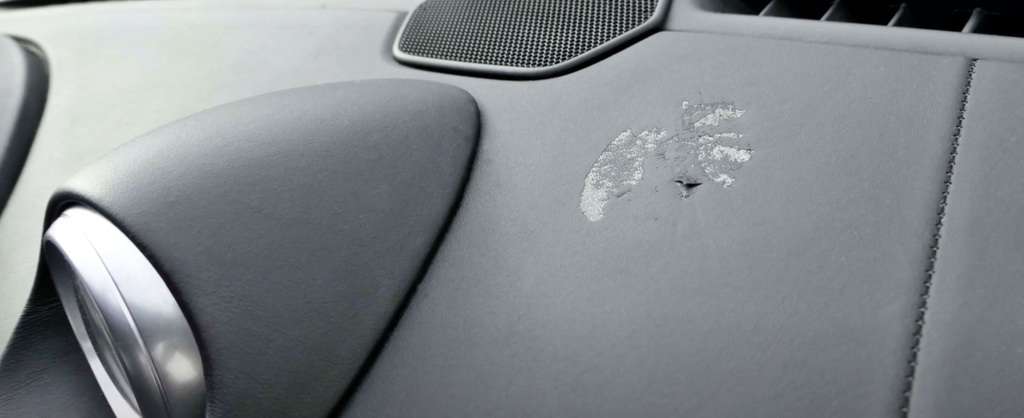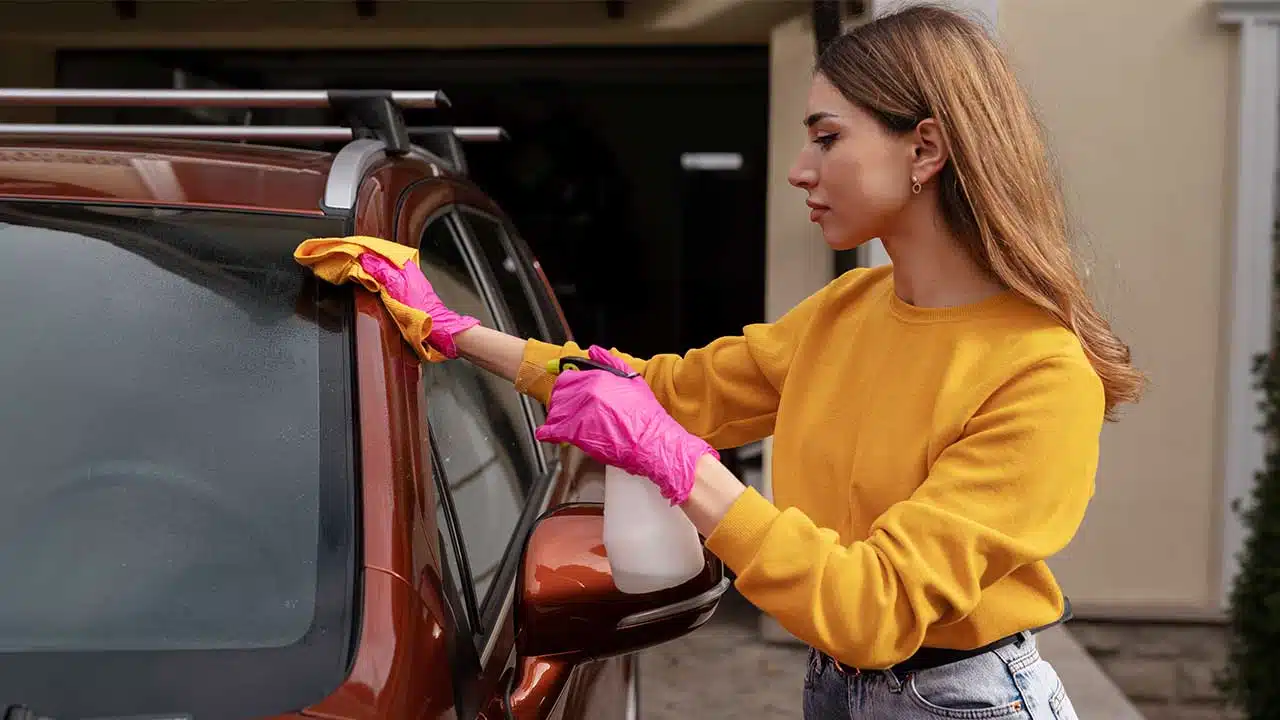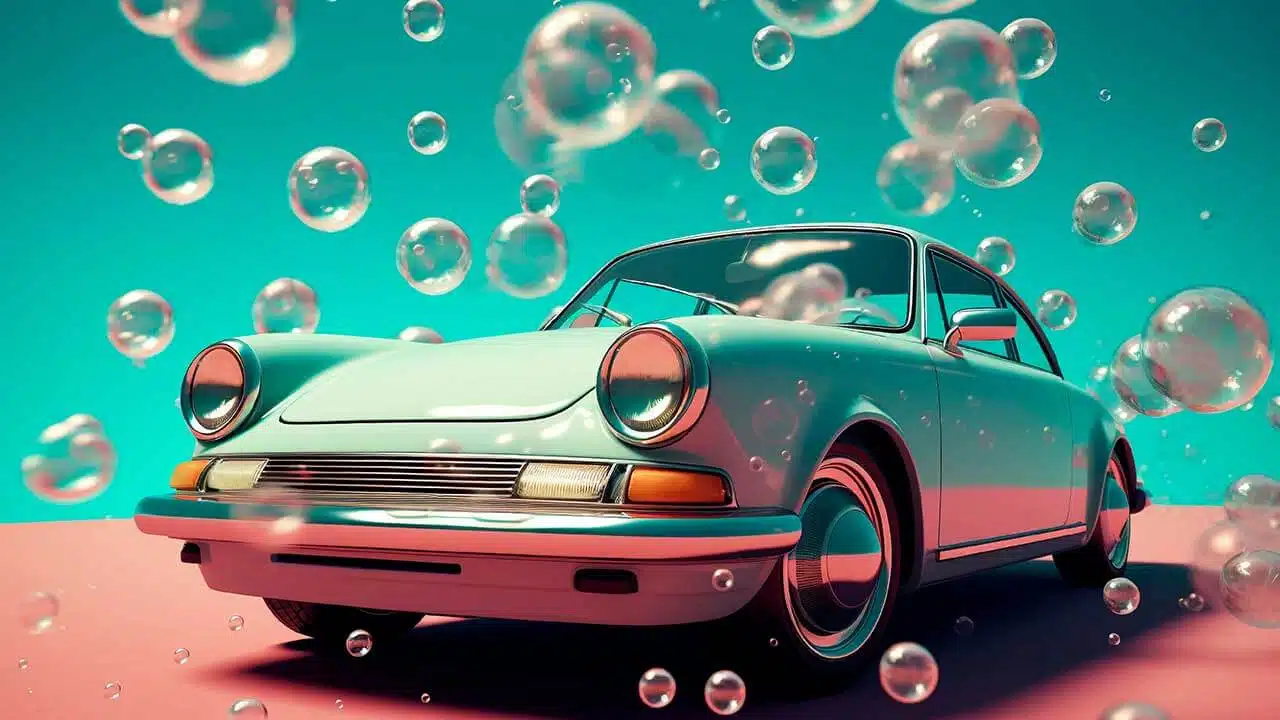To fix scratched plastic in a car, clean the area and apply a plastic polish or scratch remover. Buff with a microfiber cloth.
Scratches on car plastic can be unsightly and reduce the vehicle’s aesthetic appeal. Fortunately, fixing these scratches is a straightforward process that requires minimal tools and effort. By following a few simple steps, you can restore your car’s interior or exterior plastic surfaces to their original condition.
This guide will help you understand the materials needed and the techniques to effectively remove scratches. Whether you are dealing with minor scuffs or deeper scratches, these methods will make your car look as good as new. Regular maintenance can prevent future damage and keep your car’s plastic components looking pristine.
Identifying The Type Of Plastic
Fixing scratched plastic in your car can be tricky. The first step is identifying the type of plastic. Different plastics need different treatments. This guide will help you identify them.
Interior Vs. Exterior
Interior plastics are softer and more flexible. They are used for dashboards, door panels, and consoles. These plastics often have a textured surface.
Exterior plastics are tougher and more rigid. They are used for bumpers, mirrors, and trim. These plastics often have a smooth surface.
Common Plastic Types
There are several common types of plastic in cars. Each type has unique properties.
Polypropylene (PP): Used in bumpers and fender liners. It is flexible and impact-resistant.
Polycarbonate (PC): Found in headlight covers. It is clear and tough.
Acrylonitrile Butadiene Styrene (ABS): Used in dashboards and trim. It is strong and easy to mold.
Knowing the type of plastic helps you choose the right repair method. Always check the plastic type before starting any repair work.
Assessing The Damage
Before fixing scratched plastic in your car, assess the damage first. Knowing the type of scratch helps choose the right repair method.
Surface Scratches
Surface scratches are shallow and only affect the top layer. Use your fingernail to check if the scratch catches. If it doesn’t, it’s a surface scratch.
Surface scratches are usually caused by minor abrasions.
They can be easily fixed with simple polishing.
Using a mild abrasive polish can help remove these scratches. Apply the polish with a soft cloth and rub gently in a circular motion.
Deep Scratches
Deep scratches are more severe and penetrate multiple layers. They usually catch your fingernail when you run it over the scratch.
Deep scratches often need more detailed repair work.
They might require sanding, filling, and repainting.
For deep scratches, start by cleaning the area thoroughly. Use a fine-grit sandpaper to smooth the edges of the scratch. Apply a plastic filler if needed, then sand it again to make the surface even.
Finish by using a matching paint to cover the scratch and blend it with the surrounding area.
Gathering Necessary Tools
Fixing scratched plastic in your car can be simple. Start by gathering the right tools. Having the correct tools makes the job easier and faster.
Basic Tools
You’ll need some basic tools to begin. These tools are often found at home or a local store. Here’s a list of what you might need:
Microfiber Cloth: Soft cloth to clean and polish.
Soap and Water: For initial cleaning of the scratched area.
Plastic Polish: Helps in removing minor scratches.
Sandpaper (2000-3000 grit): Smoothens deeper scratches.
Specialized Equipment
Sometimes basic tools are not enough. Specialized equipment can help fix deeper scratches. Here are some tools you might need:
Heat Gun: Softens plastic for easier repair.
Plastic Filler: Fills in deep scratches or gouges.
Buffing Machine: For a smooth and shiny finish.
Plastic Primer and Paint: Restores the original color of the plastic.
Having these tools ready will make the repair process smooth. You’ll be able to fix scratches efficiently and effectively.
Cleaning The Area
Fixing scratched plastic in a car starts with cleaning the area. A clean surface ensures better results. Dirt can interfere with the repair process. Follow these steps to clean the area properly.
Choosing Cleaners
Selecting the right cleaners is crucial. Avoid harsh chemicals that can damage the plastic. Here are some recommended options:
Mild dish soap
Isopropyl alcohol
Plastic-safe cleaner
Use a soft cloth or microfiber towel for the best results. These materials are gentle on plastic surfaces.
Proper Cleaning Techniques
Use the following techniques to clean the plastic surface:
Mix mild dish soap with warm water.
Dip a soft cloth into the soapy water.
Gently wipe the scratched area.
Rinse the cloth with clean water.
Wipe the area again to remove soap residue.
Dry the area with a microfiber towel.
If using isopropyl alcohol, follow these steps:
Apply a small amount of alcohol to a soft cloth.
Gently rub the scratched area.
Wipe away any excess alcohol with a clean cloth.
For plastic-safe cleaners, read and follow the manufacturer’s instructions.
Ensuring the area is clean helps the repair materials adhere better. This step is essential for achieving a smooth finish.
Fixing Surface Scratches
Surface scratches on your car’s plastic can be annoying. They can make your car look older and less cared for. Luckily, these scratches are often easy to fix. This guide will show you how to make your car’s plastic look new again.
Using Toothpaste
Toothpaste is not just for teeth. It can also help with small scratches on plastic. Here’s how:
First, clean the scratched area with a damp cloth.
Apply a small amount of white, non-gel toothpaste to the scratch.
Rub the toothpaste into the scratch with a soft cloth.
Use small, circular motions for best results.
Wipe away the excess toothpaste with a clean, damp cloth.
Dry the area with a soft, dry cloth.
The toothpaste acts as a mild abrasive. It can polish out light scratches.
Applying Plastic Polish
Plastic polish is another great option. It works well for deeper scratches. Follow these steps:
Clean the scratched area with soap and water.
Dry the area completely with a soft towel.
Apply a small amount of plastic polish to a soft cloth.
Rub the polish into the scratch using circular motions.
Continue rubbing until the scratch is less visible.
Wipe away any excess polish with a clean cloth.
Plastic polish can fill in deeper scratches. It helps make them less noticeable.
Method | Pros | Cons |
|---|---|---|
Toothpaste | Easy to find, inexpensive | Best for light scratches |
Plastic Polish | Effective on deep scratches | More costly, requires purchase |
Both methods are effective. Choose the one that suits your needs best. Fixing surface scratches can make your car look much better. It is simple and cost-effective.
Repairing Deep Scratches
Deep scratches on your car’s plastic can be frustrating. They can make your vehicle look old and worn out. But don’t worry! You can fix these deep scratches with a few simple steps. This guide will help you restore your car’s plastic to its original beauty.
Using Sandpaper
First, gather some fine-grit sandpaper. Wet the sandpaper with water. This reduces friction and prevents further scratches.
Gently rub the sandpaper over the scratch. Move in a circular motion. Keep the area wet while sanding. Continue until the scratch is less visible.
Use a clean cloth to wipe the area. Check if the scratch is still there. Repeat the process if needed.
Material | Purpose |
|---|---|
Fine-grit sandpaper | To smooth out scratches |
Water | To reduce friction |
Clean cloth | To wipe the area |
Applying Heat
Heat can also help repair deep scratches. Use a heat gun or a hairdryer. Set it to a low heat setting.
Hold the heat source close to the scratch. Move it back and forth. The heat will make the plastic more pliable. This allows the scratch to blend in with the surrounding area.
Be careful not to overheat the plastic. It can cause damage. After heating, use a clean cloth to smooth the area.
Heat gun or hairdryer
Low heat setting
Clean cloth
With these methods, your car’s plastic can look new again. Deep scratches don’t stand a chance!
Final Touches
Now that you’ve addressed the main scratches, it’s time for the final touches. This stage ensures your plastic surfaces look as good as new. Focus on polishing, buffing, and applying a protective coating. Follow the steps below for a flawless finish.
Polishing And Buffing
Polishing helps smooth out the surface. It removes minor imperfections.
Use a high-quality plastic polish. Apply it evenly on the scratched area.
Take a microfiber cloth. Rub the polish in small, circular motions.
Continue polishing until the surface looks smooth and shiny.
Next, begin buffing. Buffing brings out the shine and removes excess polish.
Use a clean, dry cloth. Buff the surface in circular motions.
Check the surface. Repeat the process if needed.
Applying Protective Coating
Adding a protective coating is essential. It guards against future scratches.
Choose a UV-resistant plastic sealant. These sealants protect against sun damage.
Apply the sealant evenly. Use a clean cloth for application.
Let the coating dry completely. Follow the instructions on the product label.
After drying, check the surface. Ensure an even and smooth coat.
Reapply the coating every few months. This maintains protection and shine.
Step | Action | Tool |
|---|---|---|
Polishing | Apply polish in circular motions | Microfiber cloth, Plastic polish |
Buffing | Buff the surface to shine | Clean, dry cloth |
Protective Coating | Apply sealant evenly | Clean cloth, UV-resistant sealant |
By following these steps, your car’s plastic surfaces will look like new. Enjoy the flawless finish and added protection.
Preventative Measures
Keeping your car’s plastic parts scratch-free requires regular care. Preventative measures save time and money. Here’s how to protect your car’s plastic effectively.
Regular Maintenance
Regular maintenance is crucial for keeping your car’s plastic parts in top shape. Follow these steps:
Clean the plastic surfaces weekly using a gentle cleaner.
Avoid harsh chemicals; they can damage the plastic.
Inspect for small scratches regularly and address them immediately.
Polish the plastic parts monthly to maintain their shine.
Keeping a routine helps prevent scratches from getting worse.
Protective Covers
Using protective covers is another effective way to prevent scratches. Consider these options:
Cover Type | Use | Benefits |
|---|---|---|
Seat Covers | Protects seats from scratches and spills | Easy to clean, durable |
Dashboard Mats | Prevents scratches on the dashboard | Reduces glare, easy to install |
Door Protectors | Guards against scratches from entering and exiting | Flexible, easy to attach |
Investing in protective covers can extend the life of your car’s plastic parts.
Conclusion
Fixing scratched plastic in your car can be straightforward with the right tools. Follow the steps to restore your car’s interior. Regular maintenance can prevent future scratches. With these tips, your car’s plastic will look as good as new. Enjoy your scratch-free interior and drive with pride!
Fix Scratched Plastic in Car FAQ
Clean the area. Use a heat gun or hair dryer to soften the plastic. Buff with a soft cloth. Apply plastic polish.
Yes, scratched plastic can be restored. Use a plastic polish or a baking soda paste to buff out scratches.
Clean the plastic with mild soap and water. Dry thoroughly. Apply a plastic restorer or conditioner. Buff with a microfiber cloth. Repeat as needed for shine.
Clean the scratched area thoroughly. Apply a plastic scratch remover or polish. Use a microfiber cloth to buff the surface gently. Repeat if necessary for deeper scratches. Finish by applying a plastic protectant.
Buff the area with a plastic polish and a microfiber cloth for minor scratches. Use fine-grit sandpaper for deeper ones.











